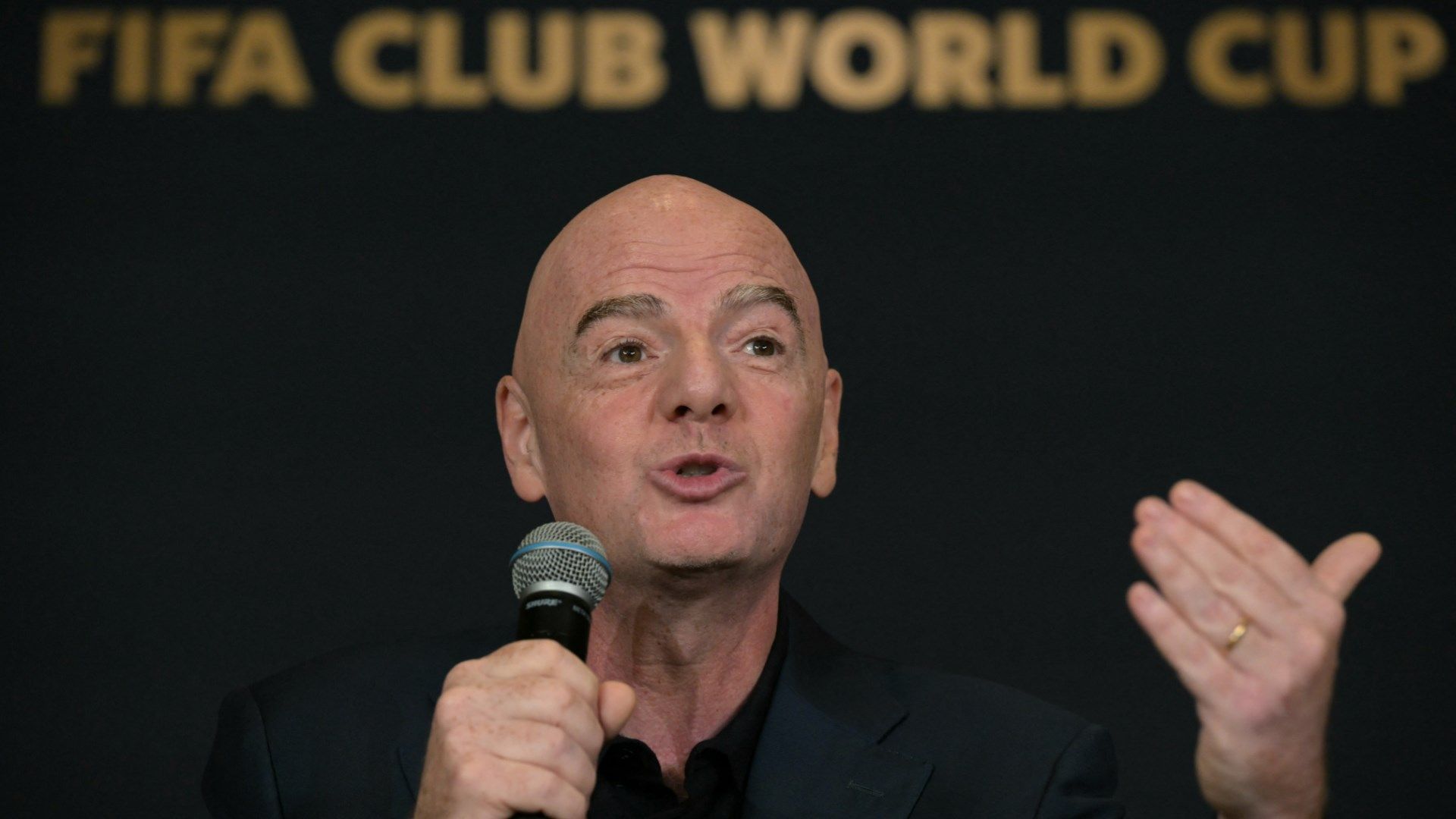


A Groundbreaking Proposal for the 2030 World Cup Expansion
In a move that could redefine international football, leaders from South America’s governing body are pushing for a larger 2030 World Cup tournament. This initiative highlights the potential for increased global participation and celebrates the event’s centennial milestone, drawing attention to how such changes might enhance the sport’s worldwide appeal.
Key Figures Convene to Advocate for 2030 World Cup Growth
Alejandro Domínguez, who heads the South American football authority, joined forces with representatives from the football federations of Argentina, Paraguay, and Uruguay. They made the trip to New York to engage with the FIFA president, building on an idea they first floated earlier in the year. This gathering marked the official debut of their concept before the global body’s leader.
Expressions of Enthusiasm from Leaders
Following the discussions, Domínguez shared his excitement online, stating, “We are committed to an unforgettable 2030 World Cup!” He expressed gratitude to FIFA President Gianni Infantino for the warm reception and for collaborating on the path to honoring football’s biggest milestone. “Let’s promote togetherness, innovation, and grand ambitions,” he added. “True global festivities occur when the sport unites people from all corners.”
Historical Context and Potential Changes for the 2030 World Cup
Should this plan gain approval, it would represent another significant shift in tournament size within the last ten years, following the unchanged structure from 1998 up to the 48-team format set for 2026. The 2030 World Cup coincides with the 100th anniversary of the first event, featuring games spread across Europe, South America, and Africa. Uruguay, as the original host from 1930, will host a match, alongside co-hosts Paraguay, Argentina, Morocco, Spain, and Portugal.
Broader Involvement in the Discussions
Beyond the football association heads, high-level officials like Uruguay’s President Yamandú Orsi and Paraguay’s President Santiago Peña participated in the talks. Meanwhile, Argentina’s football federation president, Claudio Chiqui Tapia, reflected on the experience, saying, “It was an honor to contribute to the FIFA gathering led by Gianni Infantino, aimed at laying the groundwork for the upcoming 2030 World Cup. Representing my nation at this key event was a privilege.” He emphasized their collective effort, noting, “As a united group, we’ve taken steps to turn this vision into a reality.”
Implications of Expanding the 2030 World Cup Tournament
FIFA’s general secretary, Mattias Grafström, was present at the meeting. If the organization endorses the proposal, the event would grow to include 128 games-twice as many as seen in World Cups from 1998 to 2022. Domínguez stressed the need for action, pointing to the event’s unique historical value. “With the celebration approaching, we must emphasize that this isn’t just any tournament-it’s not merely another World Cup,” he explained. “This presents a rare chance to stage the initial rounds in Uruguay, Argentina, and Paraguay.”
Opposition and Debates Surrounding the Expansion
Although CONMEBOL fully supports adding more teams, the idea has faced pushback from other FIFA affiliates. At the proposal’s inception, UEFA President Aleksander Čeferin voiced strong objections, labeling it as ill-advised during a press event following UEFA’s yearly assembly in Belgrade, Serbia. “I’m as taken aback by this as anyone,” Čeferin remarked. “In my view, it’s not a sound approach.”
Concerns from Critics
Opponents claim that enlarging the tournament might reduce the standard of competition and diminish the value of the qualification process, sparking ongoing discussions about balancing tradition with innovation in global football.
Background on the FIFA and CONMEBOL Meeting
In recent developments within the football world, FIFA and CONMEBOL officials have gathered to explore the possibility of expanding the 2030 World Cup to 64 teams, marking a significant shift in how global football tournaments are structured. This meeting highlights the ongoing efforts to make the World Cup more inclusive and representative of football’s worldwide popularity. Discussions have centered on balancing tradition with innovation, ensuring that the expansion aligns with the sport’s growth in emerging markets.
Key Participants and Their Roles
FIFA, as the global governing body for football, plays a pivotal role in organizing the World Cup and setting international standards. CONMEBOL, the South American football confederation, represents countries like Brazil, Argentina, and Uruguay, which have a rich history in the tournament. Officials from these organizations convened to deliberate on logistical and strategic aspects of the potential expansion. This collaboration underscores the importance of regional input in shaping a tournament that could feature teams from all continents more prominently.
Key figures involved include FIFA President Gianni Infantino and various CONMEBOL representatives, who emphasized the need for broader participation. By incorporating diverse voices, the meeting aimed to address how expanding to 64 teams could enhance the 2030 World Cup’s appeal and competitiveness.
The Proposed Expansion to 64 Teams
The idea of expanding the 2030 World Cup to 64 teams builds on FIFA’s previous decisions, such as the 2026 edition’s increase to 48 teams. This proposal would involve adding more slots, potentially allowing for additional preliminary rounds or group stages to accommodate the extra teams. FIFA officials have pointed out that this move could help foster greater diversity, giving underdog nations a better chance to shine on the global stage.
Benefits of World Cup Expansion
- Increased Global Representation: With 64 teams, more countries from regions like Africa, Asia, and Oceania could qualify, promoting football development in less represented areas. This aligns with the spirit of inclusivity, potentially boosting participation from nations that have never made it to the finals.
- Economic and Cultural Boost: Hosting a larger tournament could generate more revenue through expanded broadcasting deals and sponsorships, while also creating cultural exchanges that highlight local traditions. For instance, countries bidding to host might see tourism surges, as seen in past events.
- Enhanced Competition and Excitement: More teams mean more matches, offering fans a richer viewing experience with unexpected matchups. This could lead to thrilling underdog stories, much like how smaller nations have upset favorites in recent World Cups.
However, expanding the 2030 World Cup to 64 teams isn’t without its hurdles. CONMEBOL officials raised concerns about the tournament’s duration, which could extend to over a month, impacting player welfare and club schedules. Logistical challenges, such as securing enough venues and managing travel for additional teams, were also discussed as potential roadblocks.
Potential Challenges of Expansion
- Player Fatigue and Scheduling Conflicts: A larger roster might lead to a more grueling schedule, raising risks of injuries and conflicts with domestic leagues. FIFA and CONMEBOL are exploring solutions like better rest periods or revised calendars to mitigate this.
- Infrastructure Demands: Host countries would need to upgrade stadiums and transportation systems, which could strain resources and budgets. For example, if multiple nations co-host, coordination becomes even more complex.
- Maintaining Tournament Quality: There’s a risk that adding more teams could dilute the competition’s intensity. Officials debated strategies to ensure that qualification processes remain rigorous, perhaps through regional playoffs or performance-based criteria.
Impact on Global Football and Future Tournaments
The decisions from this FIFA and CONMEBOL meeting could set precedents for future World Cups beyond 2030, influencing how international football evolves. Expanding to 64 teams might encourage investments in youth programs and grassroots development worldwide, helping bridge gaps between football powerhouses and emerging talents.
Effects on Player Development and Fan Engagement
- Opportunities for Emerging Talents: With more spots available, young players from underrepresented regions could gain exposure, potentially leading to better scouting and development programs. This could revitalize interest in football at the community level.
- Fan Engagement Strategies: FIFA is considering digital innovations, like enhanced app features for real-time updates, to keep fans engaged during a longer tournament. This includes virtual reality experiences or interactive voting, making the 2030 World Cup more accessible globally.
Moreover, the expansion discussions touch on broader themes, such as sustainability in sports events, drawing parallels to global agendas for inclusive growth.[Reference:[Reference:https://www.weforum.org/stories/2020/01/the-future-of-work-look-like-2030/]For instance, incorporating eco-friendly practices in hosting could align with worldwide efforts to make major events more environmentally responsible.
Long-Term Implications for FIFA and CONMEBOL Relations
This meeting strengthens ties between FIFA and CONMEBOL, potentially leading to more collaborative initiatives. By addressing expansion thoughtfully, they could ensure the 2030 World Cup remains a premier event while adapting to the sport’s changing landscape. Discussions also covered financial models, like revenue sharing with participating nations, to support ongoing football infrastructure projects.
In exploring these avenues, FIFA and CONMEBOL are not just planning a bigger tournament but shaping the future of global football. This forward-thinking approach could inspire other sports organizations to adopt similar strategies for inclusivity and growth.[Reference:[Reference:https://www.weforum.org/publications/the-future-of-jobs-report-2025/in-full/4-workforce-strategies/]As the 2030 World Cup expansion talks continue, stakeholders are focused on creating a balance that benefits players, fans, and the sport as a whole.









